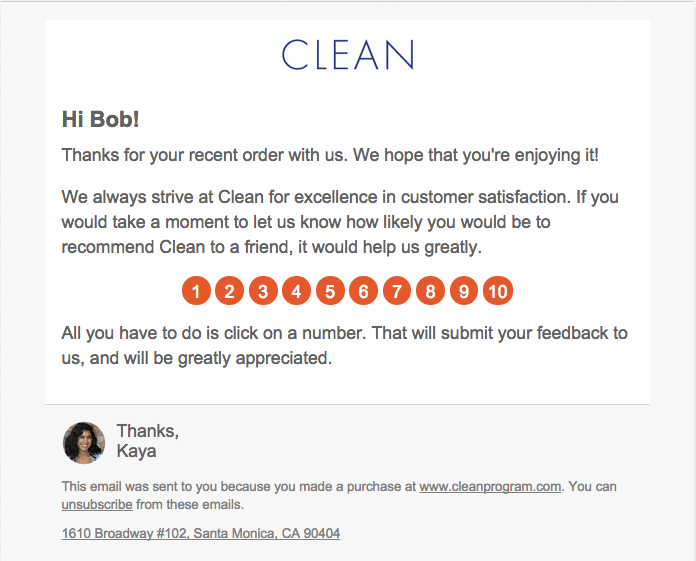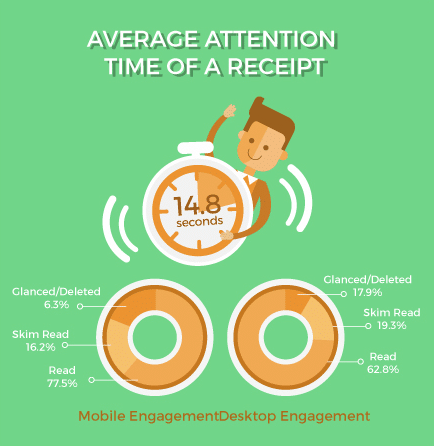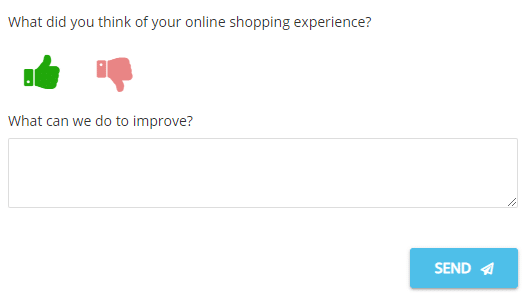Five Feedback Tips That Will Boost Email Campaign Performance
Additionally, email feedback is significant for customer-centricity. In order to provide your consumers a forum for two-way communication where they may express their opinions and impressions of your email(s) and the information you’ve supplied, you might consider collecting feedback inside your email campaigns. In other words, as a marketer, you learn what your customers really value.
The effectiveness of email feedback
Let’s examine an example.
Let’s say you’ve launched a typical advertising campaign for a new product. You’re expecting that this series of emails would significantly increase sales of that certain product or at the very least bring it more attention. You won’t be able to tell how well it was received if, as is more than probable, your readers don’t respond to your email (and you don’t gather email feedback). You’re curious.
Did the information make sense?
Had any use?
Was the promotion appropriate for this target audience?
Do my readers have any ideas on how I might become better?
The information from your email campaign response will fill in these gaps for you.
So let’s give you some feedback recommendations to get you started on the road to effective email marketing.
Pose inquiries that advance your objectives
Email campaigns are created by businesses with a variety of objectives in mind. And you want to convey a certain message to your consumers with each of these efforts. Welcome emails (for new subscribers), seasonal campaigns, post-purchase drip emails, monthly newsletters, and cart abandonment campaigns are just a few examples of the kind of emails you may send.
However, it’s crucial to utilize questions in your feedback form that point your clients in the proper direction in order to get relevant feedback from these campaigns. Consider that you recently sent a post-purchase drip email. Your objective with this kind of email is to check in with the consumer after they’ve completed a successful transaction.
As a result, using the Net Promoter Score (NPS), one of the most pertinent questions to ask is, “How likely are you to suggest us to a friend or colleague?” This straightforward question fits with your intention to determine client loyalty and satisfaction.

Alternately, your strategy can look a bit different for a newsletter email. If you want to make it a bit more fun and engaging, you may want to try something simpler, like “What did you think of this newsletter?” with a simple yes-or-no response choice or even thumbs-up-or-down.
Make sure that your surveys are succinct
No matter where you are gathering the input, this is often the case (e.g. websites, mobile apps, email, etc). The amount of stuff that is now readily accessible online (even in email inboxes) has a tremendous impact on our customers’ attention spans.
Only the information they perceive significant is being scanned and retrieved, so if there is too much stuff or it takes them too long to read it, they are extremely likely to pass over it. What’s left is a three-page feedback survey that receives nearly no responses, which is not what you were aiming for.

Because of this, it’s crucial to make your feedback surveys succinct and to the point. Ensure that readers can skim the material fast and provide you comments with little to no effort. This implies that you should just include one or two questions in your survey.
A minimum of one or two open-ended inquiries
One of the nicest things you can do is to provide readers the choice to provide open-ended comments. Why? Open-ended questions allow your audience the chance to provide a more thorough answer, which may often pinpoint the cause of the issue or the reason for their happiness as well as provide suggestions you haven’t even considered yourself.

Not to add, the same open comments may be utilized to understand the emotion behind the feedback when it comes time to sit down and examine all of your consumer feedback (e.g. via word pairing, frequently used words, etc).
Open comments make it simpler to classify input since emerging technologies like machine learning make it possible to do so automatically based on the information in the open comments.
Use feedback only when you can take action based on the findings
This is perhaps one of the key components of an effective feedback plan. If you’re willing to solicit input, you must also be ready to act on the findings of that feedback. The rationale is that it will increase any future email response rates and keep your readers interested if you can show that the input you want really causes change.
Inform the reader of your plans for using their comments
Last but not least, don’t forget to inform your clients. If your readers understand why they are giving you feedback, the probability that they will do so is substantially greater. For instance, inform your readers that you want to enhance any next emails using their comments (s). Your readers are more inclined to take the time to provide feedback if they believe it will really change for the better.






Recent Comments